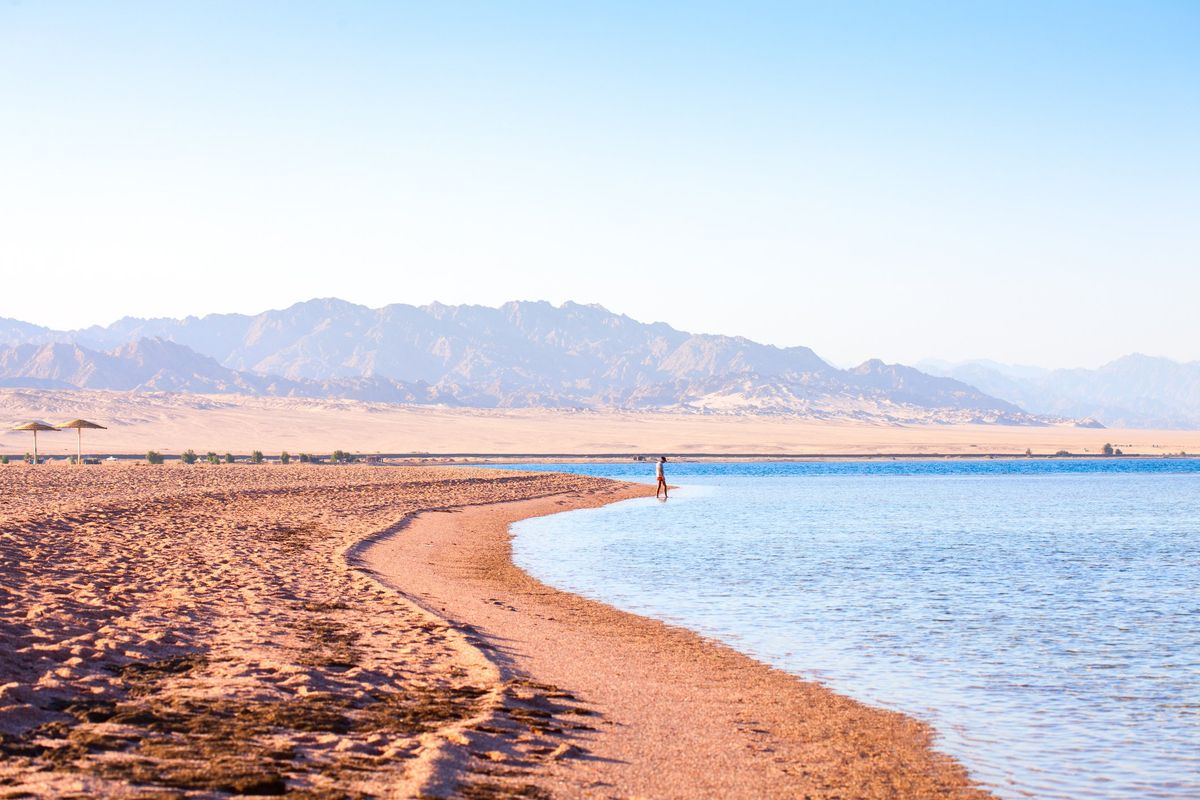News
Mimi Launder
Jul 25, 2018
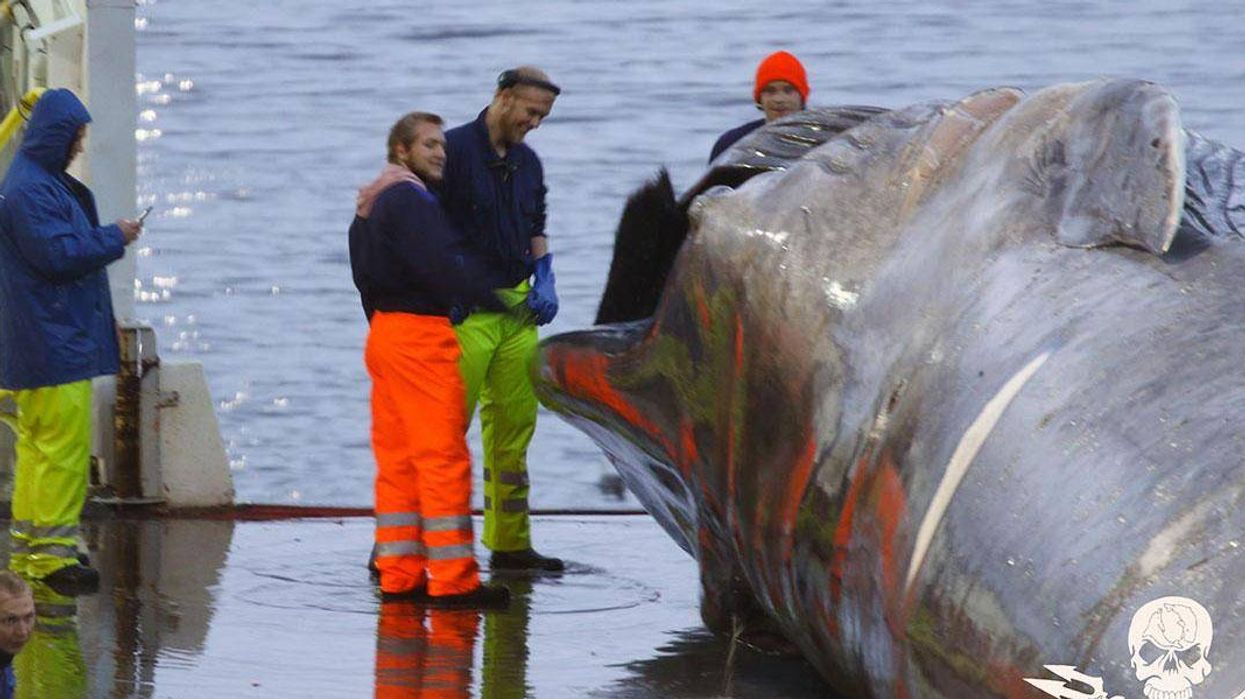
Picture:
SEA SHEPHERD
Warning: Graphic images below.
Millionaire Kristján Loftsson, the Icelandic whaler who earlier this week we reported aims to kill 150 more whales this summer, has responded to accusations by assuring indy100 that "we have a quota of 161".
Loftsson's company, Hvalur hf, was shown butchering a rare blue and fin whale hybrid in shocking photos taken by anti-whaling groups in Iceland earlier this month, which Loftsson has now claimed were Photoshopped.
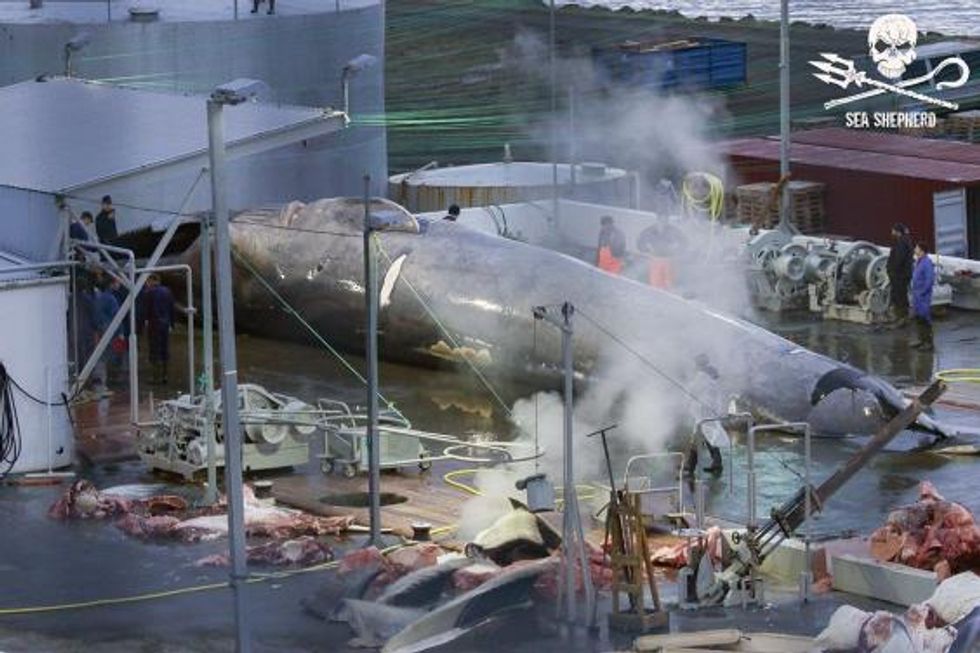
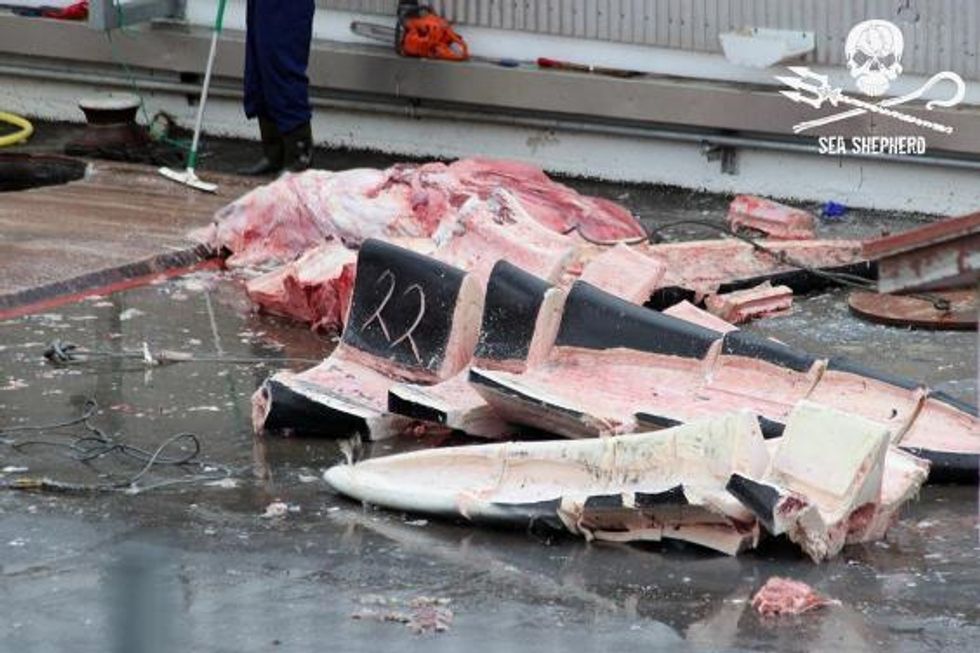
The hunting season targeting fin whales - the second largest mammal after the blue whale - began in early June.
Already this summer, the company has slaughtered 50, but is permitted to kill 161 fin whales by the end of the season in September. Although Loftsson told indy100 the final tally may be less depending on weather conditions.
Other whale species can occasionally get caught up in the company's metaphorical nets, including the rare hybrid photographed, which Loftsson admitted to us is the fourth of its kind his company has killed.
He implied these unintentional kills amount to collateral damage, explaining that species can be tricky to identify during a hunt when only the back of the whale is visible. He told indy100:
When hunting, you only see the back of the whale, so it looked like a fin whale.
We see blue whales all the time and we leave [them].
Sigursteinn Masson, the Icelandic representative for the International Fund for Animal Welfare (IFAW), said:
The killing of a blue/fin whale hybrid demonstrates the difficulty for whalers at sea to identify which species they are actually pursuing.
The result is that a rare and protected species ultimately suffers the collateral damage resulting from an unnecessary and culturally unpopular hunt.
Now that the evidence has been confirmed, we yet again call for an immediate and permanent end to this practice to prevent further harm to these endangered species which not only play a crucial role within the marine ecosystem, but also embody such a rich national and cultural heritage as well.
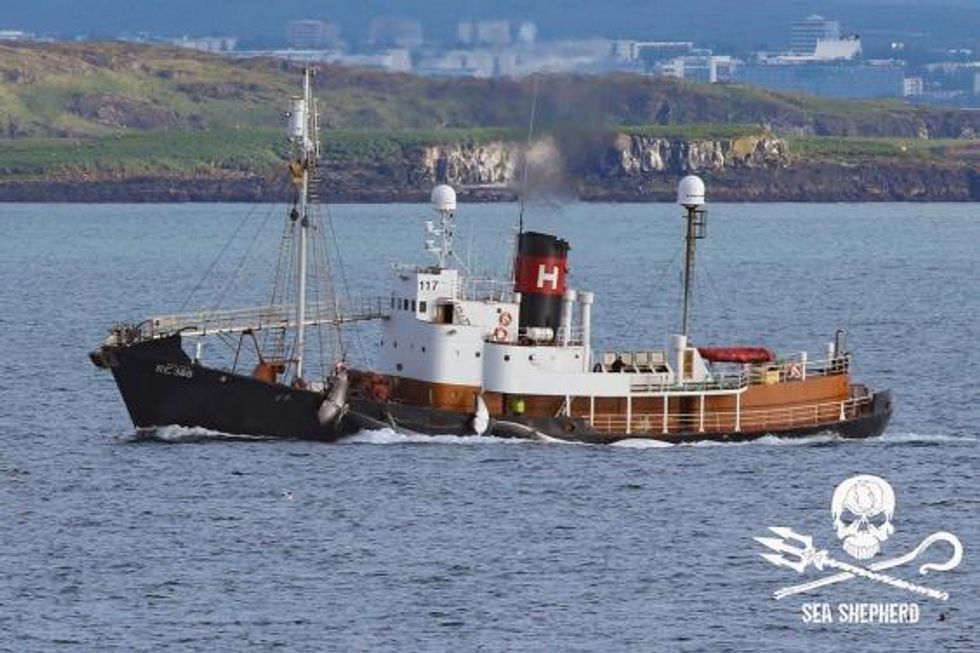
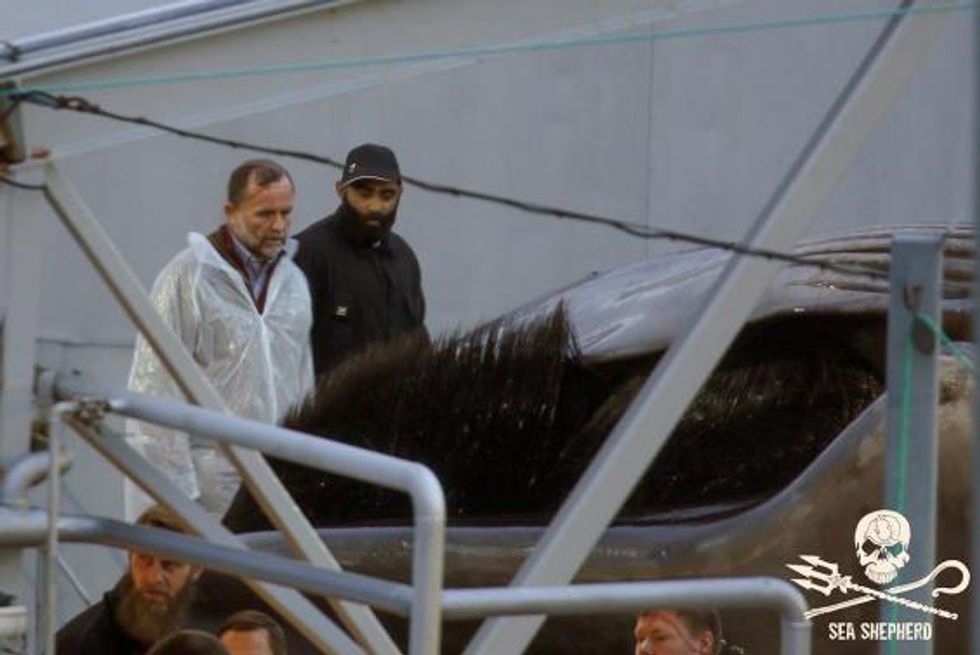
Loftsson also alleged to indy100 that the widely shared images from Sea Shepherd, included in this article, were Photoshopped after anti-whaling charities and some experts initially incorrectly identified the whale pictured as a protected blue whale.
Tests carried out at Iceland's Marine Research Institute have confirmed that the whale was the offspring af a female blue whale and a male fin whale.
These are legal to kill under Icelandic law, though the meat cannot be legally traded.
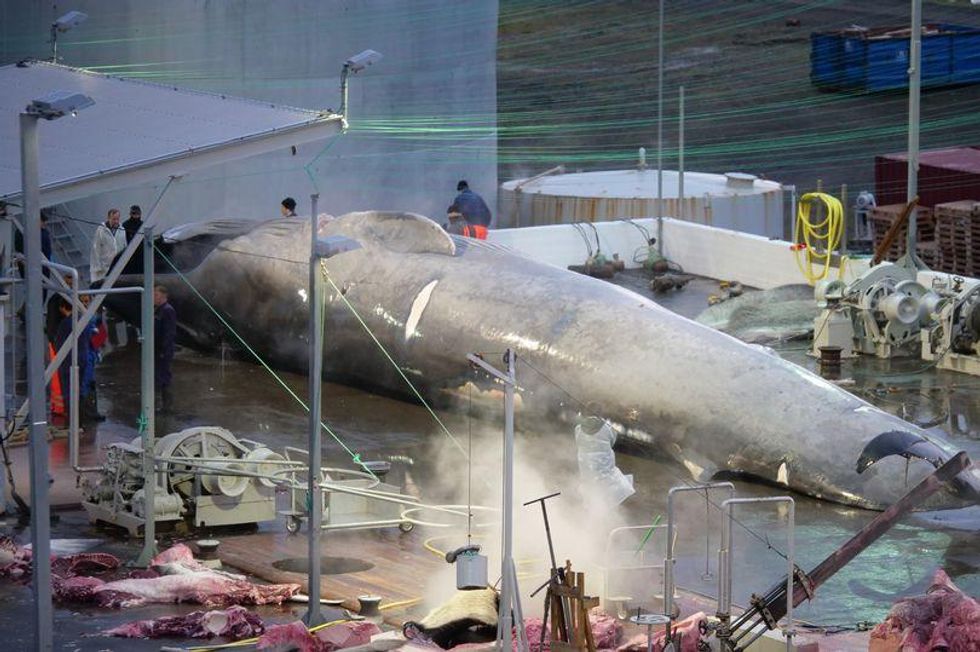
Loftsson is "absolutely sure" the images were Photoshopped to show a blue whale and, as a result, incorrectly appear as if they were taken during daylight hours.
The sun only sets for around 3 hours a day during the Icelandic summer, but Loftsson claims the event took place when it was dark:
It happened at night. It was very overcast and rainy...
But when you look at these pictures, it looks like the middle of the day.
They were photoshopped to show a blue whale.
He added:
These people are trying to smear us.
This hunting season follows a two-year break from whaling due to struggles with Japanese customs on whale products.
Sea Shepherd UK strongly denied the accusations, pointing out that photographs were independently released by Sea Shepherd UK and Hard to Port.
Rob Read, COO at Sea Shepherd UK, told indy100:
The photos as published by us were completely unaltered in any way.
He added:
This is Icelandic summertime and it barely gets dark and we are using expensive cameras with 300 - 600mm lenses.
Not only that his entire whaling station is floodlight.
He said that whale had all the characteristics of a blue whale.
In addition the identification by world leading authorities on blue whales by Dr Richard Sears of MICS and Dr Phillip Clapham of NOAA were not solely based on skin colour but also the entire pattern of colour on the whale (no white belly at all or under the fluke), the shape of the dorsal fin (identical to a blue whale), the shape of the tail stock (as a blue whale) and the entire black colouration of the baleen (like a blue whale and not like a fin whale it even a hybrid).
None of these can be Photoshopped.
Hard to Port told indy100 that "spinning the truth" is not in their interest, and added:
Weather conditions can change within minutes in Iceland but there was plenty of light at the time. We took video footage of [the whale] next to the slipway of the whaling station that can also confirm the conditions at the time of the landing.
[The whale] showed many features that indicated it to be not a fin whale but a hybrid or potentially a blue whale (darker belly, all black baleen, bluish color, the lack of a white lip, the size).
We could not have done this in photoshop. It is obvious to us that instead of admitting his company's mistake he has turned into damage control and tries to discredit the work of conservation groups with claims like this.
More: This beached whale has shocked tourists in Paris, but it's not what it appears to be
Top 100
The Conversation (0)







